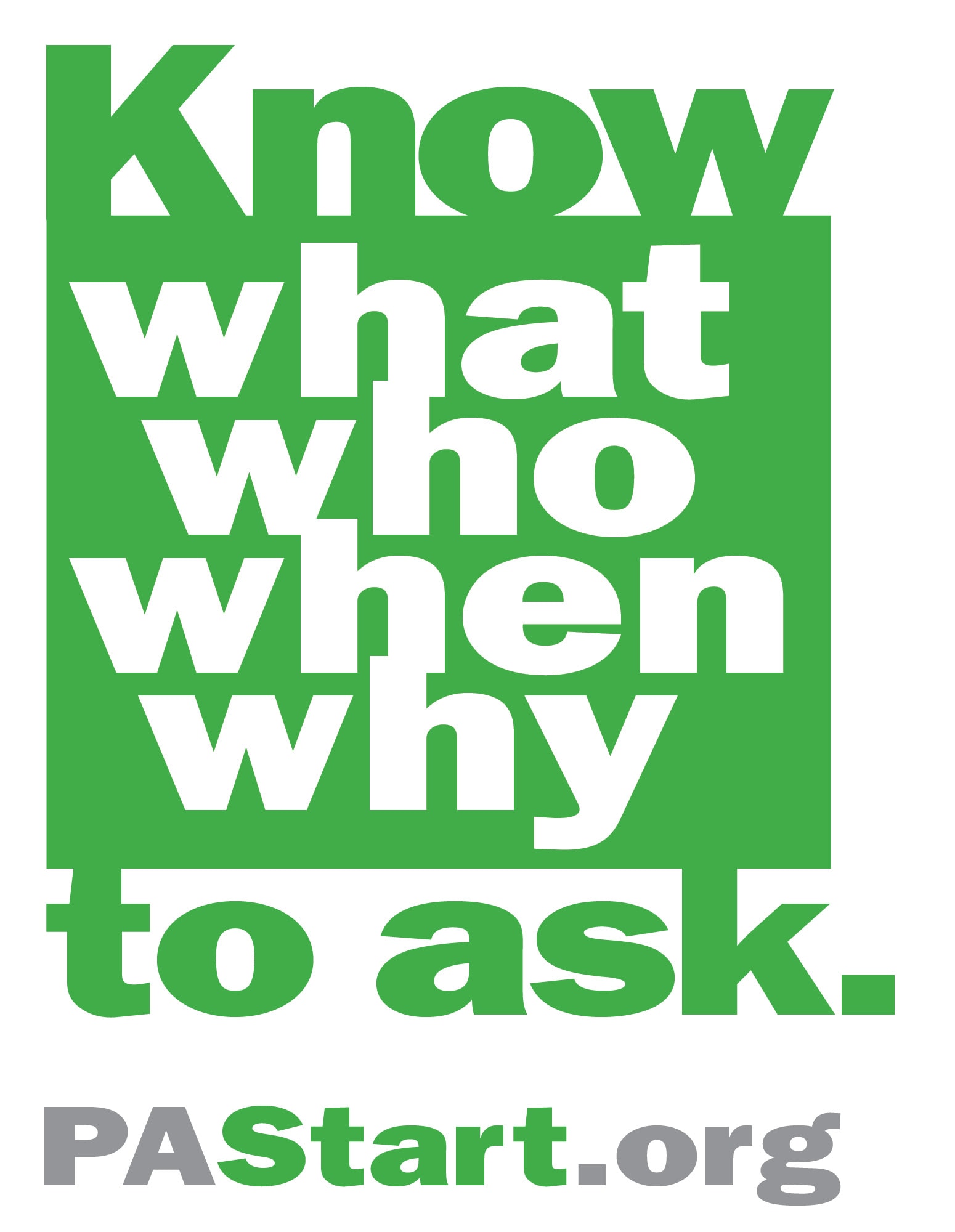Care Enough to Become Empowered.

Since 2016, the Pennsylvania Prescription Drug Monitoring Program (PA PDMP) office has been working hard to create and maintain a system that is useful as a point-of-care decision tool for prescribers and pharmacists. Although this is a big step in the right direction, DOH recognizes that this effort is just one piece of the solution to curbing the opioid epidemic.
PAStart has partnered with DDAP and the DOH to create messaging specifically designed to reinforce and educate “Patient Empowerment”, to put the control and awareness in the hands of the patient. This initative features many messages targeting the 18-25 population and can be utilized for other demographic groups as well.
Please download and utilize our free “Patient Empowerment” materials in your environment and programming:
- Digital Ads for the Web and Social Media (zipped folder with 12 sizes and formats)
- Video PSA’s Download from our Downloadable Media page. If you need custom, please fill out our Media Request Form
- Outdoor Billboards (Because of the many variables with outdoor advertising formats, you will need to fill out the Media Request Form and order these for your project)
- 8.5×11″ Flyers for local printing (Download from our Downloadable Media page. Multiple designs and layout formats available with room for local branding.)
- 11×17″ Posters for local printing (Download from our Downloadable Media page. Multiple designs and layout formats available with room for local branding.)
- There are endless custom options that can feature thee messaging themes. For any other custom materials, please complete our Media Request Form and someone will get back to you ASAP.
Introduction
What exactly are opioids?

What should I ask my doctor if I’m prescribed an opioid after surgery?
Do I have to take opioids to reduce my pain?
NO! Opioids are just one modality that can reduce pain after surgery. There are MANY other options that have actually been shown to work with FEWER side effects. Ask your doctor about the following non-opioid treatment options:
- Over-the-counter (OTC) medications like acetaminophen (Tylenol), ibuprofen (Advil), and naproxen (Aleve).
- Application of heat or ice.
- Physical therapy, acupuncture, or massage (if appropriate for a dental surgery)
How will I feel if I’m given an opioid to manage this pain?
While opioids can provide relief relatively quickly, they probably won’t relieve all of your pain. The goal of any pain treatment is to SAFELY REDUCE PAIN, and INCREASE YOUR ABILITY TO DO EVERYDAY ACTIVITIES.
Make sure to ask your doctor what kind of pain relief and improvement you can expect overall. Will you be able to eat hard foods without your mouth hurting? Will you sleep better because your mouth pain has subsided?
Most prescription opioids have side effects like sleepiness and dizziness. Even if you take an opioid exactly like the doctor has told you too, there is still a risk of tolerance (where you would need more of the drug to produce the same effect) and physical dependence (where you experience withdrawal when the drug is stopped).
The following are commonly reported side effects that you should talk to your doctor about so you know what you may experience:
- Increased sensitivity to pain
- Constipation
- Nausea and vomiting
- Dry mouth
- Sleepiness
- Itching
- Depression
- Confusion
- Dizziness
Additionally, when taking opioids, they may affect your ability to safely operate a vehicle. Please make sure that you know how the opioids affect you before proceeding with driving.
When and how should I take the opioids?
If you absolutely need opioids to manage your pain, your doctor should prescribe the lowest possible dose. Believe it or not, a prescription for three days or less will often be enough.
Taking opioids for more than three days can increase your risk of addiction. If you’re still in pain after three days, make sure you have a follow-up appointment scheduled with your doctor so that they can reevaluate your pain. They may suggest using over-the-counter medicines or other non-drug ways to ease your pain, such as heat or cold therapy.
As a rule of thumb, opioids should only be used when necessary, and only for as long as necessary.
If you happen to need to take opioids for more than a few days, make sure you have a follow-up appointment scheduled with your doctor so that they can reevaluate your pain.
I don’t plan to misuse these opioids. What’s the deal with this naloxone?
GREAT QUESTION! Any time that you are given an opioid prescription, it’s a good idea to also ask for a prescription for naloxone, which is also known as its brand name Narcan. Learn more about the standing order for naloxone.
Think of it this way: we don’t exactly have fire extinguishers because we plan on putting out fires all day every day. We have them so that we can use them when we need to. Same goes for naloxone: you aren’t expected to overdose, intentionally or unintentionally, when you use an opioid (legitimate or illicit), but in the case that you forgot that you already took your prescribed dose and doubled up, or your little cousin got into the medicine cabinet, it’s always good to have naloxone on hand.
Signs and symptoms of overdose include:
- Small, constricted ‘pinpoint pupils’
- Falling asleep or loss of consciousness
- Slow, shallow breathing
- Choking or gurgling sounds
- Limp body
- Pale, blue, or cold skin
Overdose and Sharing Meds
Safely store unused medications.
ALWAYS store prescription opioids in a secure place, out of reach of children, family, friends, and visitors.
While at first thought, a medicine cabinet would be the most obvious and ‘safest’ place to store medications, it’s important to make sure that the medications are still completely out of reach.
The CDC recommends making sure that medicines are put up and away and out of reach and sight.
Make sure you put your medication away after every time you take it, and always make sure the safety cap is locked.
More information on the ‘Up and Away and Out of Sight’ campaign for safely storing medications can be found at upandaway.org.
Safely dispose of unused prescription opioids.
There are many drug-take-back programs in the area. To find one closest to you, please visit ddap.pa.gov.
If you are unable to take your extra prescriptions to a drug-take-back box, the FDA recommends flushing opioid pills down the toilet because they are risky to keep at home.
Never sell or share your prescriptions.
While it might seem obvious to not share your prescription opioids with family or friends, sometimes people underestimate the dangers of sharing prescription stimulants like Dexedrine®, Adderall®, Ritalin®, and Concerta®.
Prescription stimulants are medicines generally used to treat attention-deficit hyperactivity disorder (ADHD) and narcolepsy – which causes uncontrollable episodes of deep sleep. Stimulants increase alertness, attention and energy.
Taking prescription stimulants for reasons other than treating ADHD or narcolepsy could lead to harmful health effects, such as psychosis, anger, paranoia, heart, nerve, and stomach problems. These issues can also lead to things more serious, like heart attacks and seizures.
Prescription stimulant misuse CAN lead to a substance use disorder – withdrawal symptoms of stimulants include fatigue, depression, and sleep problems.
If you share stimulants with friends, it is considered misuse. People misuse stimulants by taking them in a way that is not intended, such as:
- Taking someone else’s prescription stimulant medication, even if it is for a medical reason, like ADHD.
- Taking stimulant medication thinking it will improve your grades even though you do not have ADHD, as a ‘study drug’.
- Taking more than the prescribed dose.
- Taking a prescription stimulant medication in a way other than prescribed—for instance, crushing pills, adding them to water, and injecting the liquid.
- Taking the prescription stimulant to get “high.”
- Mixing the prescription stimulant with alcohol and certain other drugs. A pharmacist can tell you which drugs are not safe to mix with stimulants.
For more information on the importance of NOT sharing prescription opioids, visit pastop.org/care. For more information on the importance of NOT sharing stimulants, visit drugabuse.gov.



